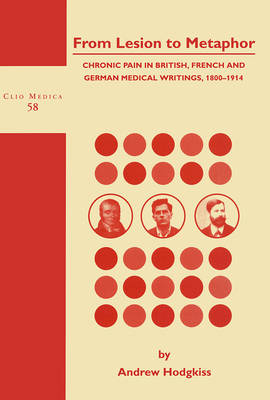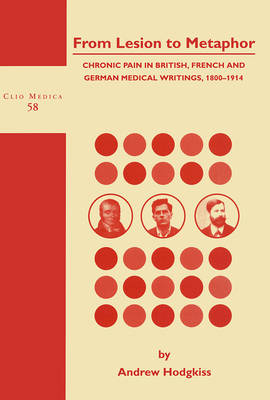
- Afhalen na 1 uur in een winkel met voorraad
- Gratis thuislevering in België vanaf € 30
- Ruim aanbod met 7 miljoen producten
- Afhalen na 1 uur in een winkel met voorraad
- Gratis thuislevering in België vanaf € 30
- Ruim aanbod met 7 miljoen producten
Zoeken
From Lesion to Metaphor
Chronic Pain in British, French and German Medical Writings, 1800-1914
Andrew Hodgkiss
€ 145,45
+ 290 punten
Omschrijving
Most non-malignant chronic pain is medically unexplained. But that has not stopped doctors from trying. These improvisations at the limit of medical knowledge offer a way into the history of neurosis.
Lesionless pain was a paradigmatic problem of clinical method after 1800. It was central to the emergence of neuralgia, spinal irritation, surgical hysteria, railway spine and hysterical conversion. Evidence of a nineteenth-century tradition of theoretical discussion about the relationship between chronic pain and pathological lesion, trauma, mood, memory and personality is brought together here for the first time. A wide range of medical texts is surveyed, including pathology, surgery, physiology, neurology, psychiatry and psychoanalysis. We see the medical gaze first penetrate the tissues of the body then extend to examine the language and mental state of the pain patient.
This history of chronic pain should be of interest to medical historians, pain clinicians, liaison psychiatrists, clinical psychologists and psychotherapists.
Lesionless pain was a paradigmatic problem of clinical method after 1800. It was central to the emergence of neuralgia, spinal irritation, surgical hysteria, railway spine and hysterical conversion. Evidence of a nineteenth-century tradition of theoretical discussion about the relationship between chronic pain and pathological lesion, trauma, mood, memory and personality is brought together here for the first time. A wide range of medical texts is surveyed, including pathology, surgery, physiology, neurology, psychiatry and psychoanalysis. We see the medical gaze first penetrate the tissues of the body then extend to examine the language and mental state of the pain patient.
This history of chronic pain should be of interest to medical historians, pain clinicians, liaison psychiatrists, clinical psychologists and psychotherapists.
Specificaties
Betrokkenen
- Auteur(s):
- Uitgeverij:
Inhoud
- Aantal bladzijden:
- 232
- Taal:
- Engels
- Reeks:
- Reeksnummer:
- nr. 58
Eigenschappen
- Productcode (EAN):
- 9789042008311
- Verschijningsdatum:
- 1/01/2000
- Uitvoering:
- Hardcover
- Formaat:
- Genaaid
- Afmetingen:
- 150 mm x 225 mm
- Gewicht:
- 503 g

Alleen bij Standaard Boekhandel
+ 290 punten op je klantenkaart van Standaard Boekhandel
Beoordelingen
We publiceren alleen reviews die voldoen aan de voorwaarden voor reviews. Bekijk onze voorwaarden voor reviews.











